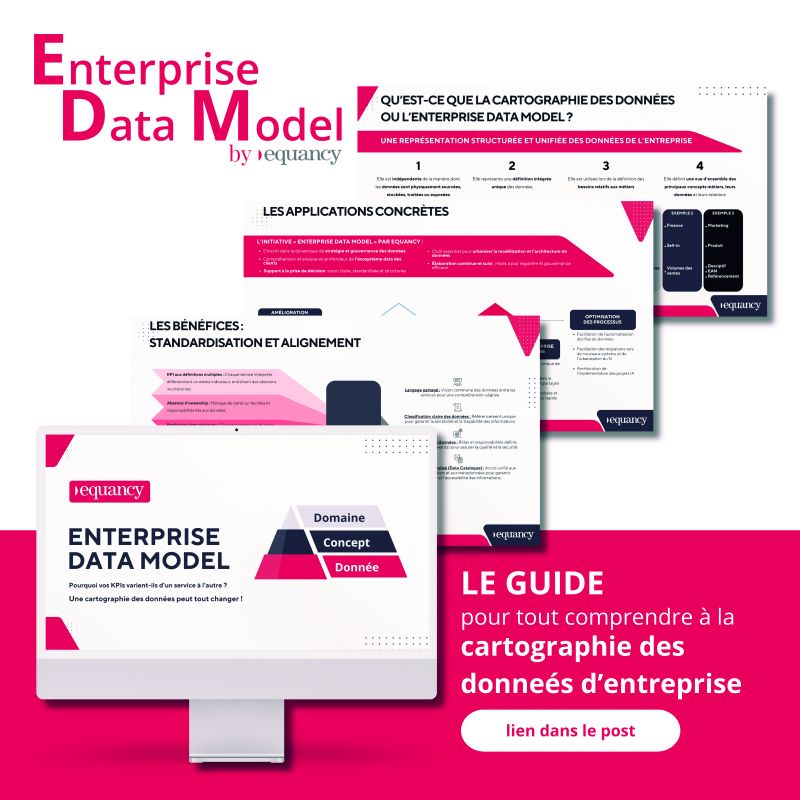SMART BI - Are you ready for it?
A true performance factor, Business Intelligence is a crucial issue for Data, IT and business departments. Needs, strategies and means are constantly evolving. As well as in 2018, Gartner distinguishes between "traditional" BI tools and so-called "modern" BI tools. This evolution has been driven in particular by three trends that are shaking up the way BI is done and thought about:
- The rise of cloud solutions, which concerns both pure BI solutions that are gradually migrating to the cloud, and company infrastructures.
- The omnipresence of data lakes in new data projects.
- The changing needs of business teams who demand more independence, agility and responsiveness in accessing data to adjust their activities in near real time.
Historically, standard BI processes have been cumbersome, not very agile and have placed a lot of weight on IT departments. In a traditional organisation, IT departments centralise and process requests for data reports from business teams. Both teams iterate until the reports are reliable.
With COVID, the business teams realised that the year n-1 data was no longer aligned with reality, so they had to evolve their reporting to access data from previous years. It became clear that the business teams could no longer afford to wait a few weeks or months to change their reporting in order to optimise their activities.
It is obvious that the traditional method is no longer aligned with the growing needs of companies: access to data must be liberated. It needs to be agile, flexible, immediate and, above all, it needs to unclog IT teams.
To meet these new needs, companies' BI approaches must be rethought and modernised.
Three complementary solutions are possible for companies to finally take the plunge, and they have been developed taking into account the data maturity of the company and its teams and enabling them to evolve towards the ultimate level of "Open BI":
- the first scenario: business teams are not yet trained in data. A data team must be set up to govern the data and create ready to use reports on the company's most important indicators.
- The second scenario: business teams that are a little more acculturated to data. It consists of creating a platform that provides structured, reliable and consistent data in a "self-service" manner. Business teams can then build the reporting sub-layer themselves. This makes BI immediately more agile and rapid.
- The last scenario, corresponding to the last level of maturity for the most advanced teams: Open BI. It provides exploratory tools to be able to directly query data.
Open BI should be the evolutionary goal of any company that relies on BI to make decisions. Gaining agility, making faster and more rational decisions based on reliable and up-to-date data, and sharing data across the company are the benefits of this last level. Once achieved, the business teams are trained in data and therefore autonomous in the use and processing of data while maintaining data quality.
This approach not only has business and organisational benefits, it also allows companies to reduce the costs associated with using data. Firstly, moving to the cloud represents a significant saving: by removing the company's infrastructure dedicated to BI, it reduces both the infrastructure and operating costs of BI. Secondly, by bringing the business on board for the construction of reporting and visualisation, the size of the teams processing the data can be reduced.
Convinced?
Before embarking on the Smart BI transition, there are several points to consider: will the ROI of the transition be positive for the company, are the transition costs lower than the expected benefits?
Once you are sure that the transition will be beneficial and strategic, just as with the digital or data transformation of a company, you must anticipate the transition to a Modern BI and put in place a methodology and a transformation plan adapted to ensure its success. There are 3 key factors to respect to ensure an effective transition:
- The adoption of a hybrid and agile methodology,
- Anticipating the scaling of POCs,
- Setting up a governance system that guarantees data access security standards.
What about you, where is your Business Intelligence strategy?
Thomas Potus




